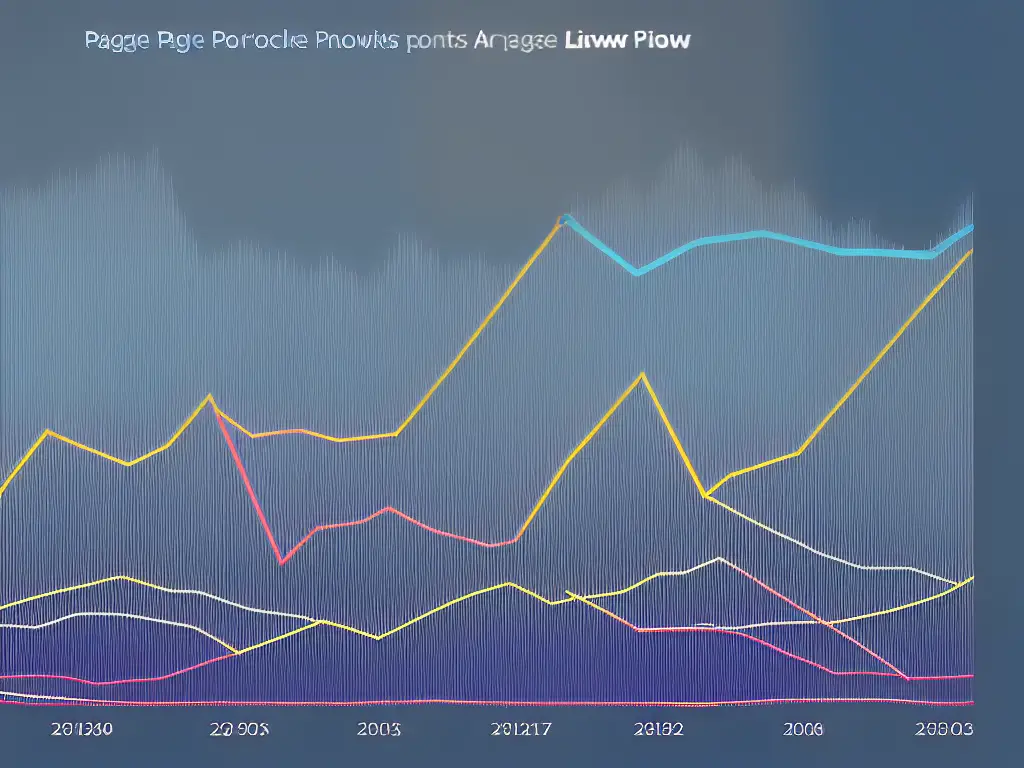The digital landscape has experienced a significant transformation with the advent of social media networks, influencing not only the way people communicate and interact, but also the world of digital publishing. It has become crucial to comprehend the relationship between social media platforms and digital publishing, as it affects content creators, publishers, and consumers alike. This exploration seeks to delve into various aspects of this relationship, from content creation and sharing to the influence on reading habits and attention span, as well as monetization strategies and emerging trends in both spheres.
Introduction to Social Media and Digital Publishing
Social media and digital publishing are two interconnected forces that have revolutionized the way in which people create, share, and consume content. As millions of people all around the world log on to platforms such as Facebook, Twitter, and Instagram, a wealth of information in the form of images, videos, articles, and more, is being disseminated daily. This easily accessible, fast-paced system of content distribution has changed not only the media landscape but also the very foundations of traditional publishing models.
One of the main ways social media has impacted digital publishing is through distribution channels. Instead of relying on print distribution, publishers can now make their content available on a global scale, maximizing readership. Consequently, several publishing platforms like Medium, WordPress, and Blogger have emerged, providing a plethora of tools and features to help writers and publishers reach and engage with their audience. As it becomes increasingly easy to share content online, publishers can effectively build relationships with readers through comments, likes, and shares.
Another effect of social media on digital publishing is the reshaping of content. Given the shorter attention spans of readers in the digital era, online publishers are often challenged to deliver engaging, easily digestible content in various formats. Blog posts, podcasts, and infographics, for example, can make content more appealing to readers as well as increase the likelihood of it being shared across different social media platforms. This, in turn, has led to the rise of strategies like search engine optimization (SEO) and other content marketing techniques to ensure that publishers can optimize their content for discovery and engagement.
Besides distribution and content format, social media also offers digital publishers a direct feedback mechanism. With features like comments, shares, and likes, authors and publishers can collect data on readers’ preferences, which articles they enjoyed, or topics they are interested in. This data-driven decision-making process can help publishers consistently create and curate content that caters to reader interests and trends while maintaining a dialogue with their audience.
As social media has risen to prominence, it has significantly impacted the world of digital publishing by altering the competitive landscape. With an increasing number of authors and publishers sharing content online, it has become critical to stand out amidst the vast ocean of information found on social media platforms. To achieve this, content creators are encouraged to engage with their audience, gather insights from feedback, and develop appealing content that distinguishes them from others. This interconnected environment breeds innovation and promotes a diverse range of perspectives, perpetually pushing the boundaries of digital publishing’s potential.

Content Creation and Sharing
This shift in the competitive landscape is also characterized by the democratization of content creation and sharing driven by social media platforms such as Facebook, Twitter, and Instagram. Previously, the narrative was primarily controlled by gatekeepers like publishers, editors, and media companies, who determined the content that reached the public. However, these digital platforms now empower individual users to create and share their own content, expressing their unique ideas, opinions, and interests. As a result, networks are flooded with an array of content and perspectives, reaching and engaging with a broader audience than traditional publishing methods ever could.
Aside from breaking down barriers for content creators, social media platforms have also changed the way content is discovered and consumed. The algorithms employed by these platforms can curate personalized content for users based on their interests, preferences, and online behavior. As a result, content creators are required to tailor their content to both attract and engage their target audience. To get noticed among the vast volume of content on social media, creators must focus on producing high-quality, engaging, and shareable content that can go viral and reach a wider audience.
The role of social media in digital publishing extends beyond content creation and sharing; it also plays a significant role in content promotion. As organic reach declines on social media platforms, creators are relying on various promotional strategies, such as utilizing influencers, sponsored posts, or social media advertising to reach target audiences. Moreover, user-generated content, such as reviews and testimonials, can help increase visibility and build trust with potential readers or consumers.
Another aspect to consider is the rise of multimedia content on social media platforms. The popularity of visual content, such as images and videos, has shifted the focus away from text-heavy content. This change has pushed digital publishers to innovate and adapt their content strategies to include various multimedia formats, such as short-form videos, live streaming, and interactive content like polls and quizzes. Embracing these formats is essential for keeping up with users’ evolving preferences and maintaining engagement with audiences.
Lastly, it is worth noting that the integration of social media with digital publishing has also given rise to new ethical and legal concerns. Content creators need to be mindful of issues such as copyright, privacy, and misinformation. As social media continues to influence digital publishing, it is essential to consider these factors while framing content creation, sharing, and promotion strategies. In conclusion, the effects of social media on digital publishing are multifaceted, influencing content creation, sharing, promotion, and consumption. To succeed in the ever-evolving digital publishing landscape, creators need to adapt to these changes and adopt innovative strategies.

Influence on Reading Habits and Attention Span
One of the most significant effects social media has on digital publishing is its impact on the way people consume content, influencing their reading habits and attention span. For example, platforms such as Twitter and Facebook have accustomed users to concise posts and snippets of information that can be quickly read and absorbed. This preference for shorter and easily digestible content has extended into the realm of digital publishing, leading readers to prefer shorter articles and listicles instead of long-form content. Thus, content creators need to consider these changes in reading habits when crafting content for the social media-driven digital publishing landscape.
Additionally, the rapid pace at which social media delivers information has led to a decrease in attention span amongst users. Research suggests that the average attention span has dropped from 12 seconds in 2000 to 8 seconds in recent years. This shortened attention span has impacted digital publishing significantly, with publishers having to adjust their content to cater to an audience with a decreased ability to focus. It has become essential for publishers to capture readers’ interests through catchy headlines and visually engaging content to compete in the digital landscape.
Furthermore, the reliance on social media platforms for news and information has increased substantially. Many users now receive their daily news updates through their curated social media feeds rather than traditional news websites or other digital sources. This shift in content consumption has led to the rise of “clickbait” articles, where publishers prioritize generating clicks and shares over the quality and depth of their content. This trend of prioritizing viral content has negatively impacted the quality and credibility of digital publishing.
In response to these changes in reading habits and attention spans, digital publishers have started to experiment with innovative content formats such as interactive infographics, podcasts, and videos. These formats are more engaging and can retain the audience’s attention for more extended periods. Publishers have also begun to incorporate more visuals into their content, such as gifs and images, to attract and maintain users’ interest while scrolling through their social media feeds.
The versatility of social media has deeply influenced the landscape of digital publishing by encouraging exploration into niche interests and facilitating the growth of highly specialized publications. As a result, users can now follow and engage with content specifically tailored to their interests on various platforms, expanding the range of topics covered by digital publishers. This trend has led to increased diversity in digital publishing, with a wide variety of content catering to different audiences and preferences, ultimately enriching the digital content landscape.

Monetization Strategies in Digital Publishing
Furthermore, the rise of social media platforms such as Facebook, Twitter, and Instagram has significantly impacted the way publishers and creators generate revenue in the digital publishing space. As these platforms continue to dominate the online world, traditional content providers are met with new opportunities and challenges when it comes to monetizing their work, making it essential for them to adapt to the evolving digital environment.
One of the most prevalent strategies is advertising, where publishers use targeted ads on social media platforms to reach their desired audience. These ads can take various formats, such as sponsored posts, side banners, or even video commercials that play before a user’s chosen content.
Another common strategy to generate revenue is through subscription models. This approach involves creating premium content, such as articles, podcasts, or exclusive videos, that can only be accessed by subscribing (paying) members. Social media platforms have started incorporating this concept, with Facebook introducing “fan subscriptions” that allow users to support their favorite creators or publishers financially.
Some creators and publishers also engage in paid partnerships and collaborations, allowing brands to integrate their products or services into content produced for social media. Influencers, for example, often team up with companies to promote their offerings in exchange for payments or a commission from sales made through specific links.
Another emerging strategy is the use of e-commerce integration, where publishers sell merchandise or services directly on their social media channels. Social media platforms, such as Instagram, have introduced “shopping” features, allowing users to discover products and make purchases without leaving the app.
While these monetization strategies offer significant opportunities for publishers and creators to generate revenue through social media, each approach comes with its own set of challenges and considerations. For example, navigating the constantly-changing algorithms that determine how content is presented and ranked on each platform can be daunting. Additionally, maintaining authenticity and audience trust is crucial, as users may be quick to perceive content as overly commercial or manufactured if the monetization methods are too intrusive.
As the digital publishing landscape is continuously evolving due to the significant influence of social media, it is crucial for publishers and marketers to employ innovative and well-executed monetization strategies for success.

Analytics and Metrics
To better adapt to this constantly changing environment, social media platforms have introduced analytics tools, enabling publishers and marketers to effectively track and evaluate their content’s performance. By obtaining valuable insights on engagement, reach, and conversions, they can tailor their strategies to align with their audience’s interests.
Key performance indicators (KPIs) are essential to content analysis. KPIs commonly used in digital publishing include unique and returning visitors, page views, time spent on the page, bounce rate, and conversion rate. These metrics enable publishers and marketers to measure the success of their digital content.
Analytics tools such as Google Analytics, Facebook Insights, and Twitter Analytics provide valuable data that allows digital publishers and marketers to evaluate the effectiveness of their content. These tools help identify trends and patterns, including which types of content resonate most with the audience, changes in user behavior, and the optimal time of day to share content for the highest engagement.
Social media platforms have advanced far beyond their original function of sharing content. They now provide advanced analytics and targeting capabilities that allow publishers and advertisers to reach their desired audience with higher precision and engagement. Facebook Ads Manager provides in-depth audience targeting, while Twitter offers promoted tweets and keyword targeting.
By using analytics and metrics, digital publishers can optimize their content strategies to drive higher engagement, shares, and conversions. This data-driven approach has resulted in a more sophisticated and competitive landscape for digital publishing, with publishers and social media platforms continually refining their tactics and technologies to stay ahead.
In conclusion, analytics and metrics have had a profound impact on digital publishing, primarily through the influence of social media algorithms. As digital content consumption continues to grow rapidly, understanding how these algorithms shape the digital publishing landscape is becoming more crucial than ever.

Social Media Algorithms and their Impact
Social media algorithms play a significant role in digital publishing since they determine the content that appears in users’ feeds and what is visible to them. By analyzing different factors, such as user interests, behavior, and interactions, algorithms create a personalized experience for each individual. This has resulted in a significant shift in the way content is distributed and consumed online. To maintain visibility and relevance in this ever-changing landscape, publishers must adapt their strategies accordingly.
Social media algorithms prioritize certain types of content over others, a primary way in which they impact digital publishing. Platforms like Facebook and Instagram have prioritized video content due to higher engagement rates. Publishers must invest more resources into creating and distributing video content to take advantage of this trend. Ephemeral content such as Instagram Stories and Snapchat also receives higher prioritization from algorithms.
Publishers must also be strategic in their approach to reach their desired audience. Audience targeting involves tactics such as utilizing paid advertising, using specific hashtags, and collaborating with influencers. Publishers cannot rely solely on organic reach due to the ever-changing nature of social media algorithms.
Social media platforms have different algorithms and preferences, which means publishers must tailor their content to maximize its potential reach and engagement. This requires a thorough understanding of the algorithms’ intricacies. Examples of platform-specific strategies include creating platform-specific content, optimizing posting schedules according to peak engagement times, and repurposing content to suit the format preferred on each platform.
To succeed in digital publishing, publishers must consistently analyze their social media data and stay updated with the latest trends and algorithm changes. This allows them to fine-tune their strategies, adapt to the ever-evolving social media landscape, and optimize content positioning for maximum visibility, ultimately reaching their target audience.

Online Communities and Brand Building
Moreover, social media has dramatically transformed the landscape of digital publishing, offering publishers and content creators innovative ways to establish and interact with online communities. These platforms have become essential tools for promoting their brand and driving business growth. By engaging with online communities, publishers can gain valuable insights and feedback on content, increase brand awareness, and nurture the development of loyal, engaged audiences.
One way that publishers and content creators leverage social media in their brand-building efforts is through the creation and sharing of valuable, engaging content. This content, tailored to the platform it is shared on, can attract new members to the community and encourage existing members to share it with their own networks. This not only expands the reach of the publisher’s brand but also enhances its credibility as a source of valuable information, entertainment, or inspiration. By consistently producing and sharing high quality, relevant content, publishers and content creators enhance their reputations among their target audiences, making them more likely to return to the publisher’s site, engage more frequently, and recommend the content to others.
Another important aspect of brand building on social media is genuine engagement with the online community. This requires publishers and content creators to not only post content but also respond to comments, questions, and feedback from their audience. By engaging directly with their followers, they can build trust and rapport, showing that they value their audience’s input and truly care about their experiences. This kind of authentic engagement can result in loyal, long-term followers who are more likely to share the publisher’s content, further increasing its reach and impact.
In addition to sharing their own content, publishers and content creators can also leverage social media to collaborate with other like-minded influencers or brands. These partnerships can result in the sharing of content across multiple channels, mutually benefiting both parties and increasing their collective reach. Such collaborations can also help to strengthen the perception of a publisher’s brand within their particular niche, as they become associated with other respected entities within that space.
Building a strong online community through social media is an essential aspect of growth for publishers and content creators in the digital era. Consistently sharing engaging content, actively participating in conversations, and collaborating with others in the industry can significantly help in leveraging the power of social media. With time, effort, and persistence, publishers can create a loyal following that supports and grows their brand for years to come.

User-Generated Content and Co-Creation
The rise of social media platforms has also led to the increasing importance of user-generated content (UGC) in the digital publishing landscape. UGC, which includes content created by users rather than professionally commissioned or produced, spans across blogs, videos, images, podcasts, and more. As social media offers an accessible platform for users to share their creations globally, it challenges traditional publishing models where only select individuals or organizations had the means to reach mass audiences. With the growing impact of UGC on digital publishing, it becomes even more crucial for publishers to effectively harness the potential of social media.
Community-driven publishing is a notable result of the intersection of UGC and digital publishing. Online platforms and social media networks, such as Facebook, Twitter, and Medium, have fostered the growth of communities where individuals can come together to share and discuss their unique content. These communities effectively democratize the publishing process, making it possible for users from all walks of life to participate and have a voice. In such settings, users can seek feedback on their work, collaborate with others, and refine their content based on their audience’s reactions. This shift has introduced fresh perspectives and niche topics that may not have been covered in traditional publishing.
Another emerging trend in digital publishing is co-creation, where multiple parties, including both professionals and amateurs, collaborate to create content. Social media and online platforms enable these collaborations by providing tools that facilitate communication, sharing, and editing. For example, platforms such as Wattpad and FanFiction.net encourage writers to share their stories, allowing others to participate and contribute to their narratives. Some co-created works have even gained significant attention and have been adapted into successful novels or movies, such as the novel After by Anna Todd, which originated on Wattpad as a piece of fan fiction.
The phenomenon of user-generated content and co-creation has also impacted the field of journalism. News organizations like CNN and the BBC have embraced the use of citizen journalism and UGC in their reporting, soliciting eyewitness accounts, photos, and videos from social media users during significant events. Inclusion of UGC within news reporting provides a certain level of authenticity and amateur perspective that traditional journalism might fail to capture.
As social media continues to advance and evolve, it is clear that user-generated content and co-creation in the digital publishing realm have grown significantly. With technology enabling users to share, collaborate, and refine content effortlessly, the traditional publishing and journalism industries are experiencing disruption from the diverse and innovative content produced by people worldwide.

Ethics, Privacy, and Security in Digital Publishing
As the influence of social media further shapes the online landscape, crucial topics such as ethics, privacy, and security in digital publishing are becoming increasingly relevant. An essential ethical concern revolves around content ownership, which highlights the importance of authors, photographers, and artists maintaining the rights to their work.
To protect their creations, publishers, artists, and authors are exploring new methods, such as enforceable copyright, watermarks, or specific content licenses, which can address the challenges posed by the rapid growth of social media on digital publishing.
Misinformation, or the deliberate spreading of false information, is another ethical concern related to social media and digital publishing.
Publishers and journalists bear a responsibility to ensure accuracy and integrity in their work, but the nature of social media makes it difficult to contain or control the dissemination of incorrect information.
As a result, it is crucial for readers to develop media literacy skills and for publishers to hold themselves to high standards of journalism.
Privacy concerns arise as personal information is both readily available and susceptible to misuse in the world of social media.
Publishers who use social media must be aware of the fine line between sharing information with the public and respecting individual privacy.
This can be a challenge when covering sensitive topics or reporting on individuals who may not have consented to have their personal information shared in a public forum.
Data security is another significant issue in the realm of digital publishing and social media.
Companies who store user data are vulnerable to cyber-attacks and face the responsibility of protecting their users’ information.
In the realm of digital publishing, this includes not only personal information but also intellectual property.
Publishers must continually update their security measures to protect their content and their users’ information.
The rise of social media has had significant implications on digital publishing, bringing forth a range of ethical questions, privacy considerations, and security concerns. As a result, publishers, authors, and social media users must work together to address these challenges, ensuring that the benefits of digital publishing can be realized without compromising on the fundamental principles of ethics, privacy, and security.

Future Trends and Opportunities in Social Media and Digital Publishing
A prominent example of the intersection between social media and digital publishing is the increasing emphasis on data-driven personalization. Content creators and publishers are utilizing machine learning algorithms and artificial intelligence to analyze user data and gain insights into their preferences. This enables the delivery of more relevant and engaging content tailored to target audiences. Social networks such as Facebook, Twitter, and LinkedIn employ similar algorithms to customize content based on user behavior, thus facilitating an easier means for publishers to reach the right audience with the right message.
As with personalization, the shift towards more engaging mediums like video and interactive content is also a prevalent trend in the social media and digital publishing space. With more users consuming information through smartphone screens, videos, and interactive articles offer an immersive experience that traditional written content often lacks. Platforms such as Instagram, Snapchat, and YouTube have already demonstrated the power of visual storytelling in capturing attention and driving engagement. Publishers can take advantage of these mediums to increase audience engagement and facilitate a deeper connection with their content.
Another future trend in social media and digital publishing is that of platforms and collaborations. As the digital landscape becomes more complex and fragmented, the need for centralized content platforms has arisen. Publishers can now distribute their content across multiple social networks, aggregators, and content discovery platforms in order to reach a wide array of audiences while increasing their brand’s visibility. Furthermore, collaborations between publishers and social media influencers can help them create authentic content that resonates with the audience on a personal level, ultimately driving engagement and loyalty.
The rise of voice search and virtual assistants is a recent development in social media and digital publishing that holds significant potential for both creators and consumers. Virtual assistants such as Amazon’s Alexa or Google Assistant are becoming increasingly integrated into users’ everyday lives, leading to an increased demand for voice-friendly content. Publishers must adapt their content for optimal voice search and voice-activated device compatibility, ultimately enhancing the user experience and expanding their reach to new markets.
In conclusion, the world of social media and digital publishing is in a constant state of flux, with new advancements and trends shaping its future. The integration of data-driven personalization, engaging multimedia, strategic platform collaborations, and voice technology are cornerstones of the ever-evolving digital playground. Content creators and publishers who can capitalize on these opportunities will have a strong advantage in the race to capture and retain audience attention.

As the digital world continues to evolve, it is vital for publishers, content creators, and consumers to adapt to the ever-changing environment. The various aspects explored in this analysis highlight the nuanced relationship between social media and digital publishing and underscore the opportunities and challenges these mediums present. By understanding the impact of social media practices on digital publishing and staying current with emerging trends and technologies, publishers and content creators can make informed decisions on how best to navigate this dynamic landscape and stay ahead in the competitive market.

